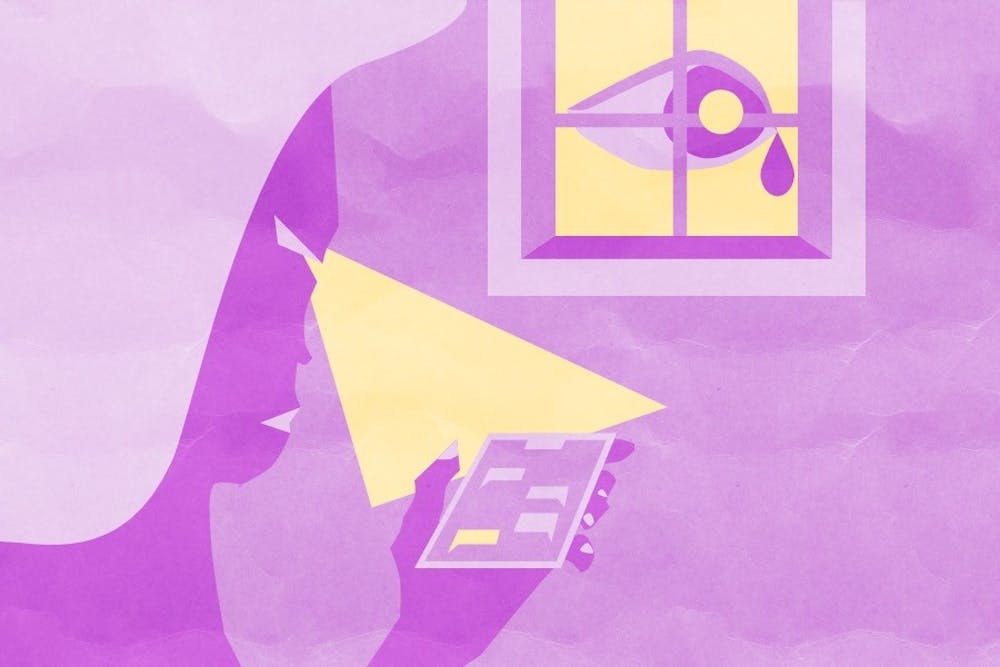As first years settle onto campus, our phones have been our best friends in college. Through Penn’s mandatory Open Pass policy, we are required to bring our phones everywhere.
As young adults adjusting to a new environment and city, this policy has many safety and social benefits. Penn’s Division of Public Safety (DPS) actually advises students to "not display your smartphone ... when walking about," but relies heavily on students’ access to phones. The first bullet point of the DPS “Top 10 List” directs students to program an emergency number into their phones. Our school also has the UPennAlert Emergency Notification System that uses texts and emails to notify us of important safety information.
First years are very familiar with their phones being at the center of their college experience. In the fall, the GroupMes were our version of Penn’s Campus. We had hundreds of chats and already followed people on Instagram and Snapchat.
Now, first years need to be very careful and deliberate in order to safely socialize in person while following the rules of the Campus Compact. There are no in–person New Student Orientation events planned or football games to attend. If you want to see someone in person, the only thing you can do is ask if they want to go on a socially distant and masked walk or if they want to sit outside (in the cold, for now). Phones have been the biggest asset for planning safe socializing.
While phones are integral to the Penn experience at the moment, what's the deal with first years constantly being on their phones?
Look around on Locust Walk. Whether it is reserving a meal time, remembering to fill out their daily Penn OpenPass, or setting up another walk with a friend—even when people are safely outside together, they are looking at their screens. The usual spots to unplug, like the gym or library, are not available. Sometimes, I feel like I’m squandering the little in–person time I have.
CNBC and the Center for Humane Technology, a nonprofit concentrated on the moral philosophy of consumer technology, outlined some tips to curb your phone use.
Push Notification Be Gone
Get rid of the push notifications in order to gain back some sanity. The feeling that accompanies receiving an Instagram notification or a Snapchat from a new friend is positively addictive. However, removing notifications is probably the easiest way to limit the distractions.
Simple Home Screen Apps
It may be helpful to just have your phone essentials, Penn Eats, and Penn Open Pass on your front screen. “A lot of [phone usage] is unconscious behavior. You shift from Facebook to Instagram, to checking the weather, to texts,” California psychologist and author Larry Rosen says. If you have to go find an app, then you may be less likely to use it.
Simple Background
Funnily enough, if your phone is not as nice to look at, you'll probably look less! It is recommended to switch over to the grayscale setting to curb the innate feeling of reward that comes with bright, distracting features.
Aside from our phones being the ultimate distractors, they're also a breeding ground for germs. A number of infested surfaces, like door handles, pin pads, elevator buttons, and hand sanitizer stations—all of which our phones graze—are unavoidable. A 2017 study found high levels of bacteria and viruses, like E. coli and Staphylococcus aureus, on the phones screens owned by 16– to 18–year–olds they tested. Now, when you add COVID–19 to the mix, phones can serve as carriers for the deadly disease.
However, there are steps you can take to reduce the risk your phone may pose to your health. Using disinfecting wipes on both your phone and on your phone case regularly are essential—if you do so, there's no doubt the risk of getting COVID–19 from your phone will decrease.
The Class of 2024 is going to have a very plugged–in spring semester. Unfortunately, it would be irresponsible to go completely off the grid. With this in mind, it's important that we continue to assess our relationship with our phones and find physically and emotionally healthy ways to use this essential technology.







